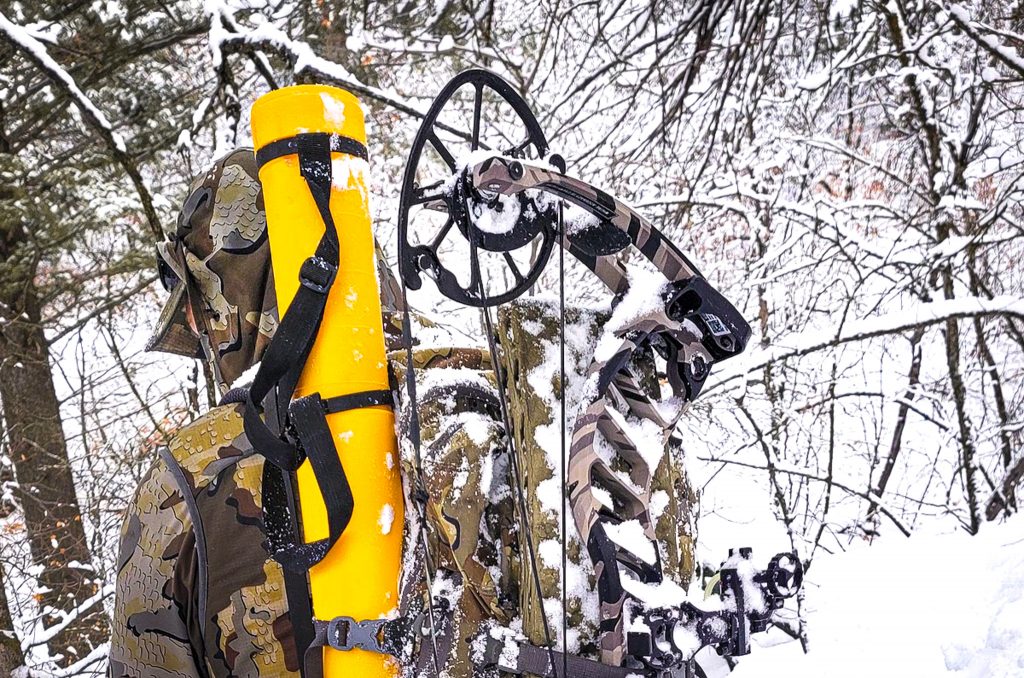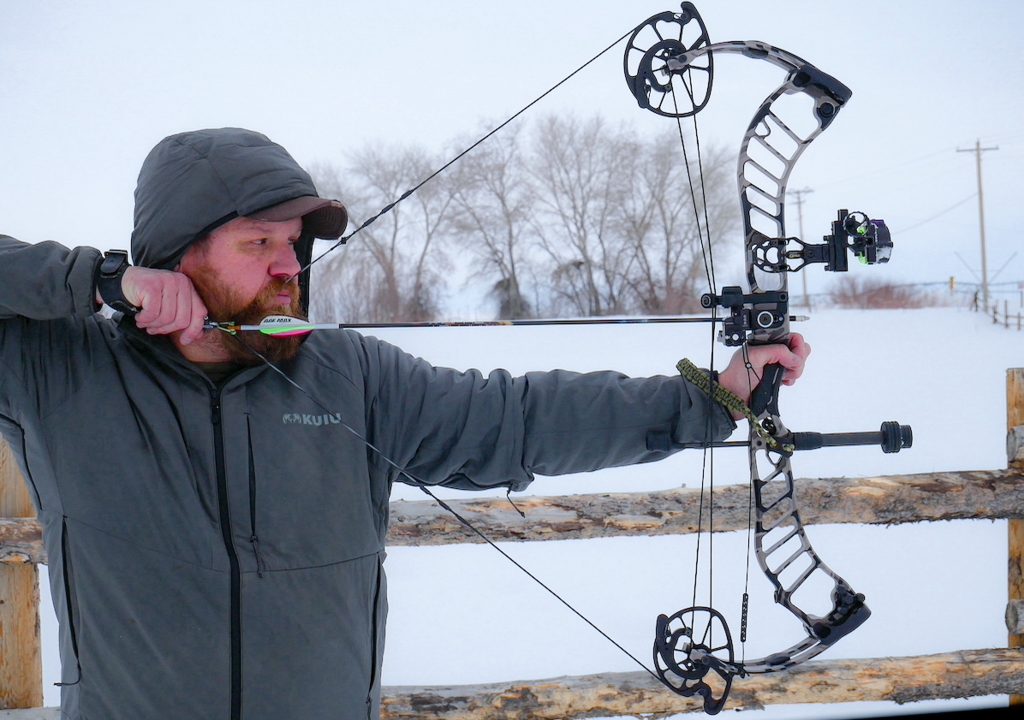Prime’s new-for-2023 Revex 4 hits a sweet-spot axle-to-axle length, produces solid arrow speed, and is fitted with a grip that promotes feel and warmth and improves shootability.
by Zach Bowhay
I remember the first time I saw a bow from Prime vividly. The bow looked different from other makes and models I’d looked at over the years. The rig had a way of standing out from the crowd. The compound had a pair of cams — two on top and two on the bottom with the string riding between them, which eliminated cam lean. I was also impressed with other things, like the finish. It was top-tier, and I loved features like a cable guard that flexed toward the center of the bow to cut down on torque. After a couple of years kicking the tires, I bought my first Prime — the Impact — in 2015. The bow lived up to my expectations, and I shot and hunted with it regularly.
Naturally, I moved on to shoot and test other bows, but I enjoyed what Prime offered. Fast forward to 2019. I was doing bow reviews for a magazine on multiple bows in the industry, and one of the bows I was testing was Prime’s CT5. The finish on the bow was excellent, and it was rich with innovative and purposeful technologies. Over the last several years, though, I had been trying to learn a lot more about tuning methods and honestly trying to tweak and improve my shooting. Although I liked the bow and shot it reasonably well, I could never get a bullet hole through paper unless I tuned my rest well inside its center shot measurement. With other bows on the market, I could yoke tune or use cam shims to keep the bow at its center shot without dramatically moving the rest one way or the other. With Prime bows, though, there was little wiggle room to adjust the cams with shims, and they didn’t have yokes to tune. For this reason, I moved on to other bows.
Enter The Prime Revex
I am always looking for and trying new bows, and even though I had nothing against Prime bows and liked the ones I had shot in the past, I just hadn’t had the chance to shoot or test a recent model, so when I got a chance to try out the new Revex, I jumped on it. My first impression of the new bow was that Prime had nailed the finish again. This bow is silky smooth, and the new Rock Ridge Scar camo is sexy.
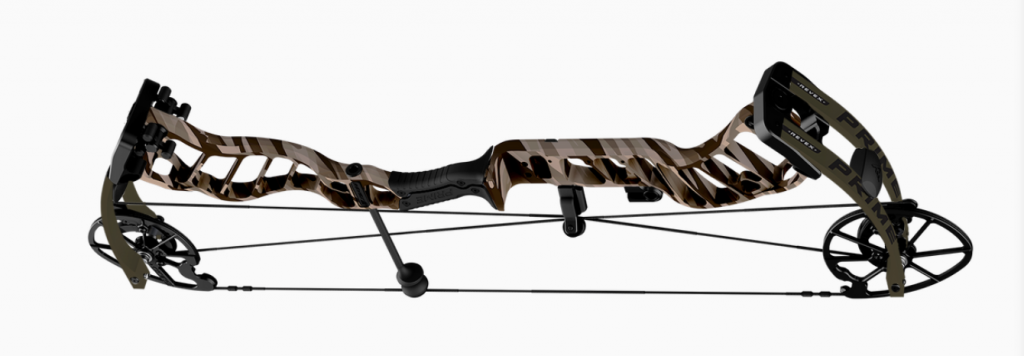
The Revex Series is available in bows with axle-to-axle lengths of 32, 34, and 36 inches. Each is branded a Revex, but the last number in the bow’s axle-to-axle measurement is used in the label. For example, the Revex 4 is the 34-inch axle-to-axle bow. All three models come in peak weights between 40 and 80 pounds, and the various axle-to-axle lengths cover multiple body sizes and shooting styles. I shoot a 29-inch draw and prefer to hunt with a mid-length bow, so the Revex 4 was my go-to.
Key Features
In the past couple of years Prime has departed from the Dual Cam system and now has the new Core Cam System, which has a cam balancing system that brings the strings and cables in line with each other to keep the cam balanced throughout the draw cycle. Another feature of the Core Cam is the draw-specific mods ensure maximum efficiency. Being draw-length specific may get more out of the cam, but adjustable cams are a better choice where individual archers can make minor tweaks to draw length, and draw-length adjustable bows also resale easier. With that noted, it is a lovely drawing and shooting cam that produces maximum efficiency.
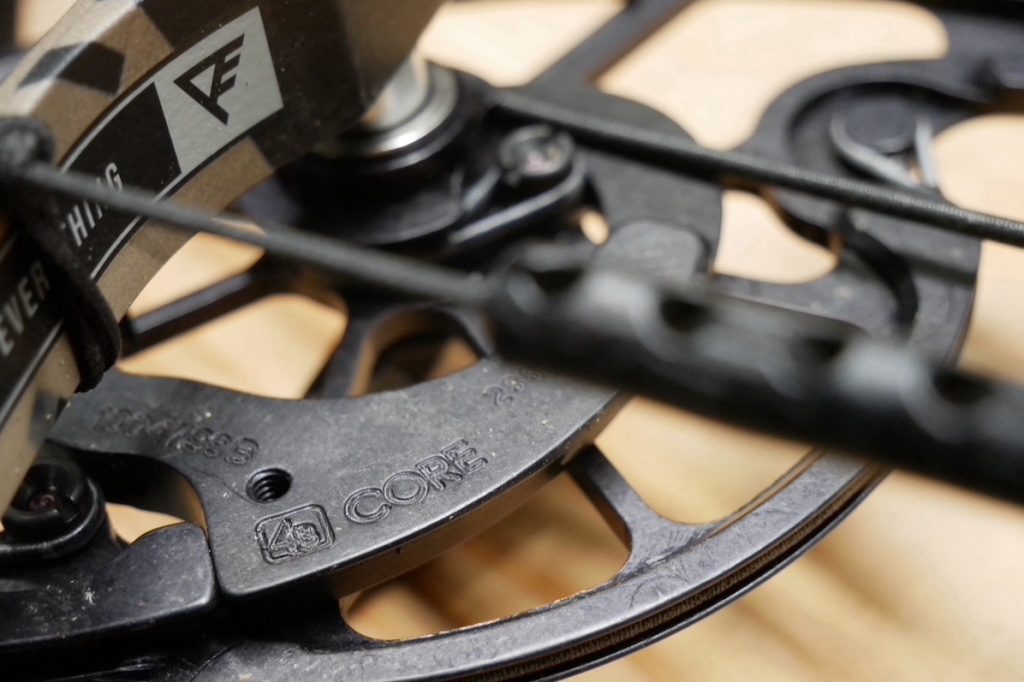
Another feature I like on the Prime bows is the Center Grip riser. The grip, as the name indicates, is at the very center of the riser, which puts more weight on the bottom end of the riser and can, for some shooters, eliminate the need for added weight. This helps because the bow lacks a lower stabilizer hole on the bottom end of the riser. Also, Revex bows have the new NanoGrip, a NASA-developed Aerogel technology that creates an insulated barrier between the cold riser and the shooter’s hand. This grip provides warmth on a cold morning on the stand or in the elk woods while still providing a flat back and slim grip preferred by most archers.
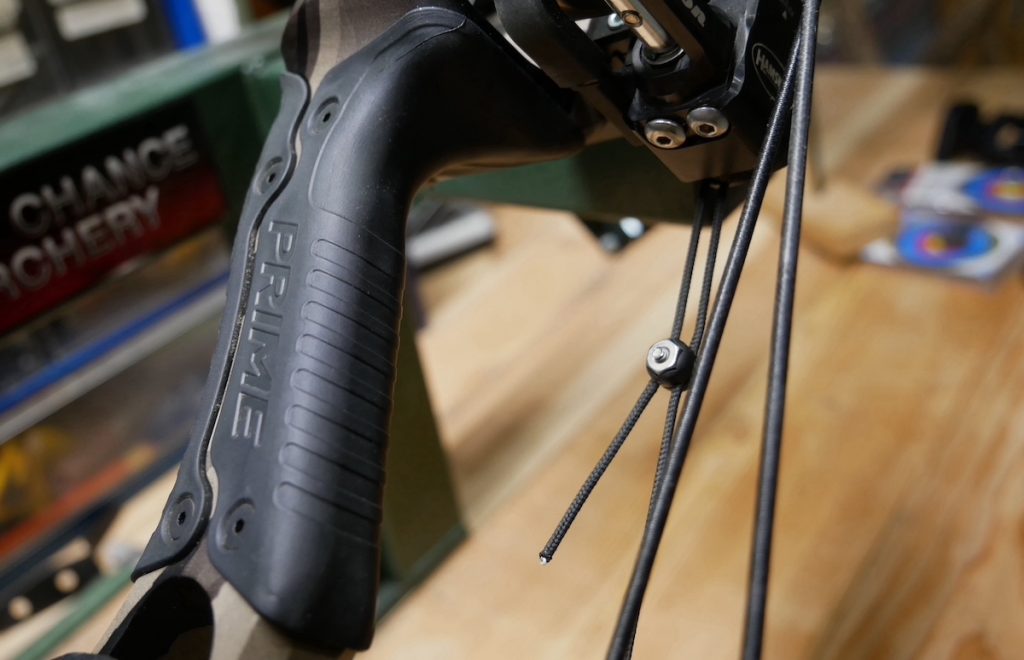
Accessorized If You Wish
Prime partnered with Tightspot Quivers to make a quiver (ShiftLock) that uniquely mounts to the back of the Prime risers on 2023 models. This quiver, like other Tightspot quivers, allows for lateral and rotational adjustments for optimal balance and to provide sight and rest clearance. The tapered dovetail design also allows for quiet and easy removal of the quiver at any time.
Prime partnered with Hamskea to develop a Prime-specific attachment for the Epsilon rest. This setup allows for a perfect center shot with minimal tuning, and their pre-set zero position works perfectly with their limb-driven axle attachment. I still need to get my hands on the Prime-specific rest and the Tightspot quiver, but through my extensive use of their products in the past, I am confident that both accessories will work seamlessly with the Prime bows.
I wish Prime had put a Picatinny rail mount for sights on the front of the riser like many other top-end bow brands have done. No, this is not a deal breaker, and traditional sight mounting is fine, but a straight-to-riser sight mount is excellent for helping balance bows by having weight centered in the riser and not hanging off to one side. This will be standard on all bows in the coming years, but it’s not an option on the Prime models as of now.
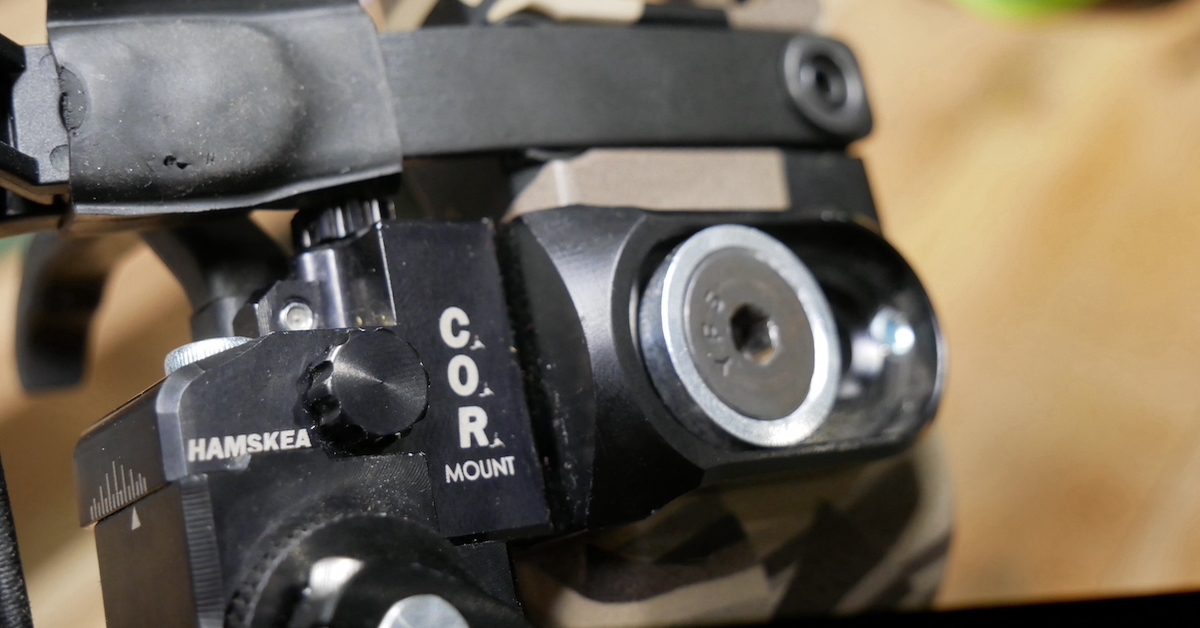
Set Up and Tuning
I often wonder if it’s just chance, but some compounds tune quickly, and some take more work. This Revex may have been the most straightforward bow I have ever tuned. I bolted a Hamskea Epsilon rest on the bow, set the center shot to 13/16-inches from the riser, lined the arrow up so it was crossing the center of the Berger hole, and boom; the first shot was a bullet hole through the paper. I fired a few more arrows, and the results were the same. I will say that I was a little concerned about how the vertical micro adjustment knob was right up against the cable guard, where I wouldn’t be able to make upward adjustments if need be. After talking to a bow technician buddy of mine, though, we decided I could adjust the bracket of the rest out to the left and then adjust the rest back into center shot where I would have the same settings but can adjust the rest vertically freely.

The Fun Stuff
People often comment on how high my peep sits when they shoot my bow. I must have a big ugly head, but that’s a personal issue. I hate, at times, having to set my peep right against the serving on the upper cam. Though this isn’t an issue with the Revex, there still needs to be more room between my peep and serving material. Also, with bows with only one set of mounting holes for the bow sight, my sight often has to be adjusted above center on the vertical bracket to keep my pins in the center of the housing. I assume it has something to do with the center grip design, but with the Revex, I can keep my housing in the middle of the bracket, which I prefer.
Sighting in the bow was like sighting in any bow. With the bow tuned well, the process was easy. Due to the fact, I am in the middle of snowpocalypse in Idaho, stretching the bow long distances for extended shooting sessions has been difficult. I was able to sight in a 20 and a 60 yards, conduct a speed test and print a tape. The tape was accurate and the distances between 20 and 60 were verified. As advertised, the bow draws smoothly, and there aren’t any big humps in the draw cycle.
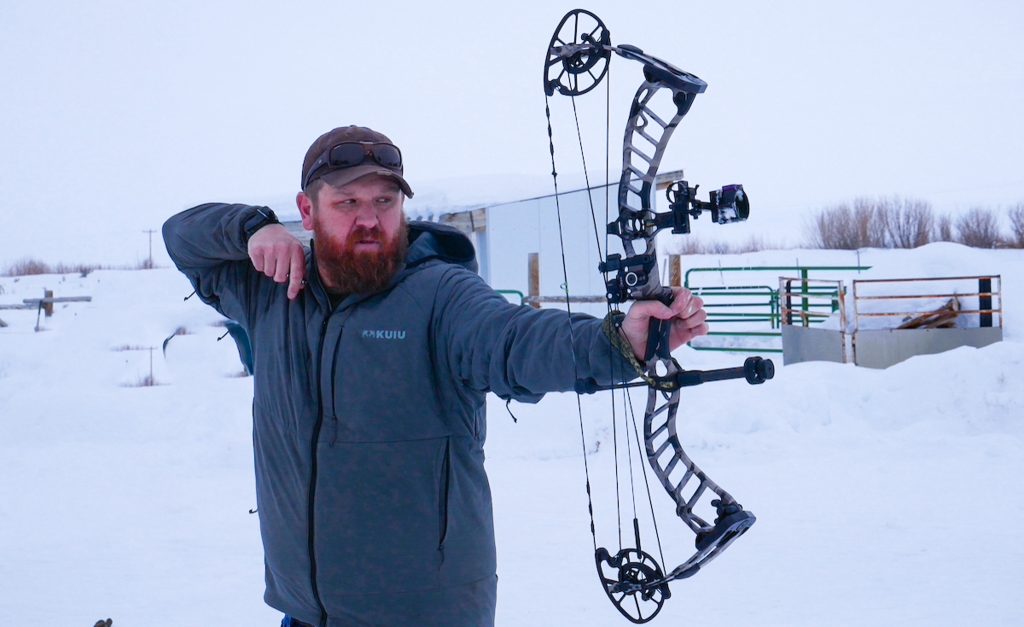
The bow also holds nicely with a solid, cable-stopped back wall. Bows are so smooth across the industry that it is hard to judge them against others. The bow is dead in hand but maybe not quite as dead as others I have shot. Still, we are sometimes nitpicking on this topic as this bow is very nice, and the vibration is minimal. Noise is similar to vibration — not the loudest bow I have ever shot but also not the quietest; however, it is on par with most in its class.
Another thing I have noticed with the Revex is that for a 34-inch axle-to-axle bow, the string angle seems steeper than other bows. I’m not sure if that’s a product of the center grip or if the cams are smaller than some other bows I have shot recently. I measured from my eye to the peep at full draw on the Revex, and the distance was 5.25 inches and with my Mathews Traverse, for example, it was only 5 inches. Again, not a deal breaker or a big deal even, just an observation I made while testing. It’s not even noticeable after shooting it for a few weeks, but I did notice it initially.
For my hunting rigs, I am setting them up for my body size and the type of hunting I do, which is hunts out West that can often consist of open spaces and longer shots than those typical of the whitetail woods. For this, I always try to balance speed and forgiveness. For me, that’s typically a bow in the 33- to 34-inch axle-to-axle range, with a brace height between 6 and 6.5 inches. I often shoot fixed blade heads and heavier arrows for elk and have found that I like to be between 275-285 fps. This has proven to be a perfect recipe for a good shooting rig for my shooting style. At a 29-inch draw length and 70 pounds, the Revex 4 shot my 477-grain Black Eagle X-Impact arrow at a respectable 275 fps. That comes to 80.12 foot-pounds of kinetic energy, which packs a punch. For comparison, I also shot a 430-grain arrow, which pushed speeds to 289 fps.

In Conclusion
Overall, I am enjoying the new Prime Revex. I look forward to spending more time with it on the range and in the field in 2023. There are many features that I love and a few I would improve. In conclusion, though, it is a pleasure to shoot. It looks good, draws nice, and holds solid, and shots find the center down range if I do my part. The grip is one of my favorites I have shot, which enhances the shooter experience. Lately, I have had it strapped to my back, up and down the mountains, following a pack of hounds while hoping to get a crack at a big tom mountain lion. With any luck, I will get to send an arrow at my first big-game animal of 2023 in the coming weeks.
